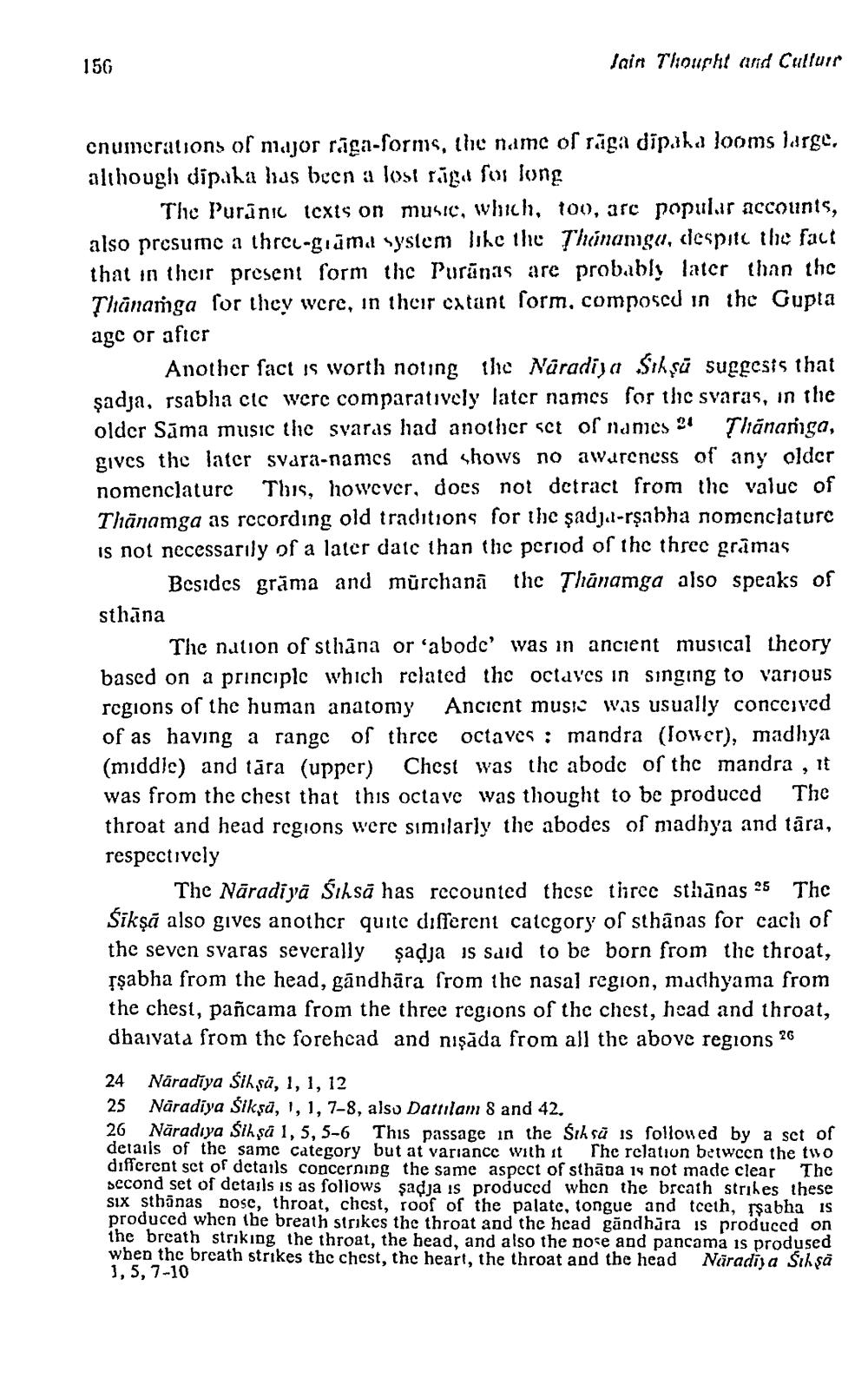________________
156
Jain Thourht and Culluir
enumerations of major raga-forms, the name of riga dipaka looms large, although dipaha has been a los rīga for long
The Purānic icxis on music, which, 100, arc popular accounts, also presumc a thrce-grāma system like the Thunamga, despite the fact that in their present form the Puranas are probably later than the Thanamga for they were, in their catant form, composed in the Gupla age or after
Another fact is worth noting the Náradija Sikşü suggests that şadja, rsabha clc were comparatively later names for the svaras, in the older Sāma music the syaras had another set of names 21 Thiānanga, gives the later svara-names and shows no awareness of any older nomenclature This, however, does not dctract from the value of Thānamga as recording old traditions for the şadja-rşabha nomenclature is not necessarily of a later date than the period of the three grāmas
Besides grāma and mūrchanā the Thānamga also speaks of sthāna
The nation of sthāna or 'abode' was in ancient musical theory based on a principlc which related the octaves in singing to various regions of the human anatomy Ancient music was usually conceived of as having a range of three octaves : mandra (lower), madhya (middle) and tāra (upper) Chest was the abode of the mandra , it was from the chest that this octave was thought to be produced the throat and head regions were similarly the abodes of madhya and tāra, respectively
The Nāradiya Sihsā has recounted these tiiree sthānas 25 The Sikşā also gives another quite different category of sthānas for cach of the seven svaras severally sadja is said to be born from the throat, şşabha from the head, gāndhāra from the nasal region, madhyama from the chest, pañcama from the three regions of the chest, head and throat, dhaivata from the forehead and nişāda from all the above regions 26
24 Náradiya Sik sā, 1, 1, 12 25 Näradiya Sikşü, 1, 1, 7-8, alsu Dathlam 8 and 42. 26 Nāradiya Sih sú 1, 5, 5-6 This passage in the Sik sū is followed by a set of details of the same category but at variance with it The relation between the two different set of details concerning the same aspect of sthāda 19 not made clear The second set of details is as follows sadja is produced when the breath strikes these SIX sthānas nose, throat, chest, roof of the palate, tongue and teeth, rsabha is produced when the breath strikes the throat and the head gāndhāra is produced on the breath striking the throat, the head, and also the nose and pancama is prodused when the breath strikes the chest, the heart, the throat and the head Näradija Sih sa 1, 5, 7-10




